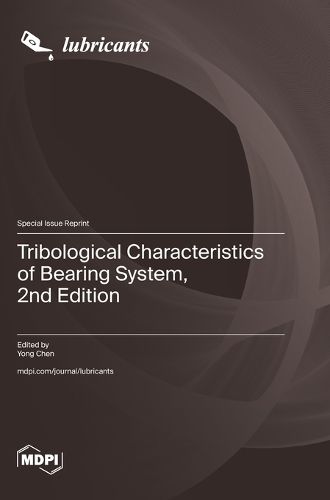Readings Newsletter
Become a Readings Member to make your shopping experience even easier.
Sign in or sign up for free!
You’re not far away from qualifying for FREE standard shipping within Australia
You’ve qualified for FREE standard shipping within Australia
The cart is loading…






This title is printed to order. This book may have been self-published. If so, we cannot guarantee the quality of the content. In the main most books will have gone through the editing process however some may not. We therefore suggest that you be aware of this before ordering this book. If in doubt check either the author or publisher’s details as we are unable to accept any returns unless they are faulty. Please contact us if you have any questions.
This Special Issue focuses on the friction characteristics of bearings, carefully compiling 16 cutting-edge research studies. Through a research path combining experiments and simulations, this Special Issue explores the lubrication mechanism, performance optimization, and fault diagnosis of bearings under different working conditions. The papers cover a wide range of dimensions, from theoretical exploration to experimental verification, showcasing the latest developments in the field of bearing lubrication. The research covers various types, such as angular contact ball bearings, gas hydrostatic thrust bearings, cylindrical roller bearings, etc. Through advanced methods such as computational fluid dynamics, artificial neural networks, and mathematical models, the influence of nozzle position, biomimetic composite cavity structure, unbalanced estimation, and other factors on lubricant distribution, load-bearing capacity, and dynamic behavior was analyzed. In addition, attention was also paid to the power loss under oil lubrication, the improvement in friction characteristics and fatigue life by carbon nitrogen co-infiltration treatment, and the lubrication challenges of bearings under special conditions such as vacuum environments and ultra-low temperatures. These research results not only provide a scientific basis for bearing lubrication design but also contribute important findings that promote technological progress and industrial upgrades in related industries. This Special Issue aims to provide new insights and reflections for both the academic and industrial communities.
$9.00 standard shipping within Australia
FREE standard shipping within Australia for orders over $100.00
Express & International shipping calculated at checkout
This title is printed to order. This book may have been self-published. If so, we cannot guarantee the quality of the content. In the main most books will have gone through the editing process however some may not. We therefore suggest that you be aware of this before ordering this book. If in doubt check either the author or publisher’s details as we are unable to accept any returns unless they are faulty. Please contact us if you have any questions.
This Special Issue focuses on the friction characteristics of bearings, carefully compiling 16 cutting-edge research studies. Through a research path combining experiments and simulations, this Special Issue explores the lubrication mechanism, performance optimization, and fault diagnosis of bearings under different working conditions. The papers cover a wide range of dimensions, from theoretical exploration to experimental verification, showcasing the latest developments in the field of bearing lubrication. The research covers various types, such as angular contact ball bearings, gas hydrostatic thrust bearings, cylindrical roller bearings, etc. Through advanced methods such as computational fluid dynamics, artificial neural networks, and mathematical models, the influence of nozzle position, biomimetic composite cavity structure, unbalanced estimation, and other factors on lubricant distribution, load-bearing capacity, and dynamic behavior was analyzed. In addition, attention was also paid to the power loss under oil lubrication, the improvement in friction characteristics and fatigue life by carbon nitrogen co-infiltration treatment, and the lubrication challenges of bearings under special conditions such as vacuum environments and ultra-low temperatures. These research results not only provide a scientific basis for bearing lubrication design but also contribute important findings that promote technological progress and industrial upgrades in related industries. This Special Issue aims to provide new insights and reflections for both the academic and industrial communities.